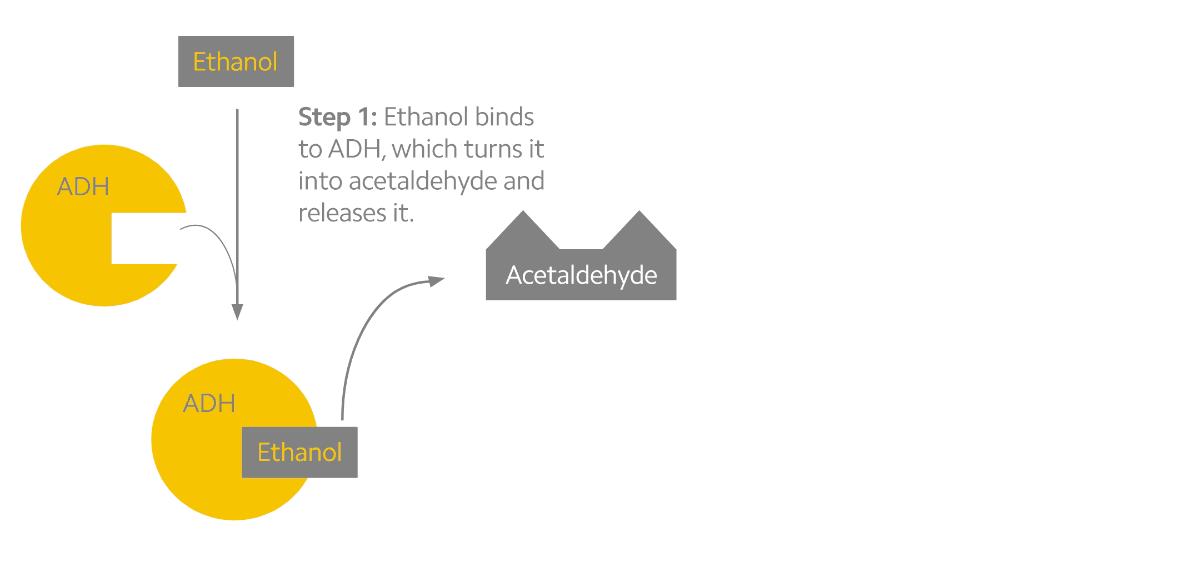Your genetic Thanksgiving journey

Thanksgiving dinner… it’s finally here. With the smells of sweet potato casserole, fluffy crescent rolls, and juicy turkey wafting in the air, you make your way to the dinner table and fix yourself a helping of food. Maybe you prepared for this moment, exercising or skipping lunch before the big dinner. But your preparation goes farther back than you might know. Thanks to thousands of years worth of evolution, your body has inherited DNA that enables you to taste specific flavors, break down specific foods, and distribute the useful components of that food throughout the body.
In honor of the holiday, we’re going to explore how genetics can influence how you experience your meal.
The bitter taste of genetics
Picture that first bite. Is it sweet? Bitter? How you perceive taste can be different than others due to genetic variations. Evolution has equipped us with an arsenal of taste receptors—specialized proteins that detect specific groups of molecules in our food. These proteins help us determine what it is we’re eating by sensing sweet, bitter, savory, sour, and salty foods1.
But our sensitivity to these flavors can be affected by specific changes in the DNA sequence. Take bitterness for example: some people inherit a slightly different coding for the bitter taste receptor TAS2R38 which makes them exceptionally sensitive to bitter compounds2. This means some foods (we’re looking at you, cranberry sauce!) might taste particularly bitter for some people. Like bitterness, our ability to taste sweet foods is also influenced by genetics. Sweet taste receptors may have evolved to help humans detect energy and nutrient rich foods, like fruits3. Interestingly, sweet taste receptors are found in more than one location and actually play a role in sugar digestion4.
Getting to the meat of the matter
So you’ve already engaged in the side dishes, it’s time now for the main course. Aside from affecting how you taste your turkey, how might genetic variation affect the way your body processes this iconic Thanksgiving food? One way is through the absorption of important nutrients. Meats like turkey are rich in iron, which the body uses to help transport and store oxygen5. By incorporating iron into protein structures called hemoglobin, the body can grab oxygen from the lungs and carry it throughout the body. Within muscles, oxygen is stored in a protein called myoglobin, which also contains iron (that’s why meat is a good source of iron). Some people are more prone to having higher or lower relative iron levels due to alterations in the TMPRSS6 gene. This gene is involved in iron absorption and storage within the body by regulating an important hormone that helps control iron levels6.
Aside from iron, you are also likely to consume some fats and cholesterol when eating turkey. How your body processes it can be influenced by many factors such as exercise, diet, and genetics. Changes to genes like PPARG, APOA2, and LDLR may have an impact on how a person’s body transports and stores fat and cholesterol.
Washing it all down
With such a feast at hand, you’ll need a drink to help wash it all down. Unsurprisingly, genetics can play a role in processing many common beverages. Take milk, for instance. The predominant sugar present in milk is lactose. Our body is able to digest lactose by producing a protein known as lactase; however, many people are likely to produce less of this protein due to their genetics, which prevents them from fully digesting dairy products. When this happens, lactose moves past the stomach and into the lower intestines where bacteria feast on the sugar and release gases as a byproduct of eating the sugar, which can lead to feeling bloated7. In some cases, though, people continue producing lactase thanks to an inherited change in the DNA coding for the MCM6 gene7.
But maybe you’re more of a wine drinker. We mentioned earlier that taste receptors (like TAS2R38) can vary from person to person based on genetics. Variations in taste receptors can influence a person’s taste preference, although there are many factors, too8,9.
Regardless of how a person chooses their wine, genetics can influence how the wine affects them. Alcohol is broken down in two big steps. The first step uses ADH1C to convert alcohol into a compound that’s known to be toxic (acetaldehyde) and may be the reason people experience facial flushing, dizziness, and nausea when drinking it10. This intermediate product is then converted to a molecule that’s more tolerable to the body (acetate) by ALDH2. Naturally, changes in the DNA coding for these genes can affect a person’s response to alcoholic drinks like wine10.

Alcohol metabolism in the body. Ethanol is converted to acetaldehyde by the ADH enzymes (yellow). Acetaldehyde is then rapidly converted to acetate by the ALDH enzymes (pink).
Much ado about sugar
Next comes the pumpkin pie! Aside from flavor, pies also have a lot of sugar. Sugar levels are closely monitored by the body because they provide an important source of energy. Changes can occur in the DNA that disrupt the body’s sugar regulatory system. In some cases, such as in changes to the G6PC2 gene, this can result in slightly elevated blood sugar levels in healthy people11. Larger effects are seen when variations occur within genes that are critical to pancreatic function, such as PDX1 or KLF11. Alterations in these genes have been associated with a rare form of diabetes known as Maturity Onset Diabetes of the Young (MODY).
Nap time
Finally, it’s time for the inevitable post-Thanksgiving nap. A common myth blames the turkey for your sleepiness, but tryptophan is not the reason many people feel sleepy after a Thanksgiving meal. While it is true that tryptophan can increase sleepiness in high doses, the amount of it in turkey is not significantly different than what you would find in other meats. It’s far more likely that you feel sleepy simply because you’re full of food. But food is only one of the environmental cues that can affect sleepiness.
Almost every organism has an internal biological clock which helps balance the daily rhythms of sleepiness and wakefulness. Although sleep preferences are heavily influenced by a person’s environment, genetics may also play a role in determining your sleep patterns. Certain variations in the DNA may affect when you prefer to fall asleep12.
No matter what you’re eating this Thanksgiving, we hope you’re enjoying it—and giving thanks for your incredible, wonderful, unique DNA.
1Roper, Stephen D., and Nirupa Chaudhari. “Taste buds: cells, signals and synapses.” Nature Reviews Neuroscience, vol. 18, no. 8, 2017, pp. 485–497., doi:10.1038/nrn.2017.68.
2Risso, Davide S. et al. “Global Diversity in the TAS2R38 Bitter Taste Receptor: Revisiting a Classic Evolutionary PROPosal.” Scientific Reports 6 (2016): 25506. PMC. Web. 22 Nov. 2017.
3Ren, Xueying et al. “Sweet Taste Signaling Functions as a Hypothalamic Glucose Sensor.” Frontiers in Integrative Neuroscience 3 (2009): 12. PMC. Web. 27 Oct. 2017.
4Young, Richard L. “Sensing via Intestinal Sweet Taste Pathways.” Frontiers in Neuroscience 5 (2011): 23. PMC. Web. 27 Oct. 2017.
5Ganz, T. “Systemic Iron Homeostasis.” Physiological Reviews, vol. 93, no. 4, Jan. 2013, pp. 1721–1741., doi:10.1152/physrev.00008.2013. Web. 17 Oct. 2017
6Benyamin, Beben et al. “Common Variants in TMPRSS6 Are Associated with Iron Status and Erythrocyte Volume.” Nature genetics 41.11 (2009): 1173–1175. PMC. Web. 22 Nov. 2017.
7Deng, Yanyong et al. “Lactose Intolerance in Adults: Biological Mechanism and Dietary Management.” Nutrients 7.9 (2015): 8020–8035. PMC. Web. 22 Nov. 2017.
8Carrai, Maura et al. “Association between Taste Receptor (TAS) Genes and the Perception of Wine Characteristics.” Scientific Reports 7 (2017): 9239. PMC. Web. 22 Nov. 2017.
9Gahagan, Sheila. “The Development of Eating Behavior – Biology and Context.” Journal of developmental and behavioral pediatrics : JDBP 33.3 (2012): 261–271. PMC. Web. 22 Nov. 2017.
10Edenberg, Howard J. “The Genetics of Alcohol Metabolism: Role of Alcohol Dehydrogenase and Aldehyde Dehydrogenase Variants.” Alcohol Research & Health 30.1 (2007): 5–13. Print.
11Baerenwald, D. A. et al. “Multiple Functional Polymorphisms in the G6PC2 Gene Contribute to the Association with Higher Fasting Plasma Glucose Levels.” Diabetologia 56.6 (2013): 1306–1316. PMC. Web. 22 Nov. 2017.
12Jones, Samuel E. et al. “Genome-Wide Association Analyses in 128,266 Individuals Identifies New Morningness and Sleep Duration Loci.” Ed. Jianxin Shi. PLoS Genetics 12.8 (2016): e1006125. PMC. Web. 22 Nov. 2017.